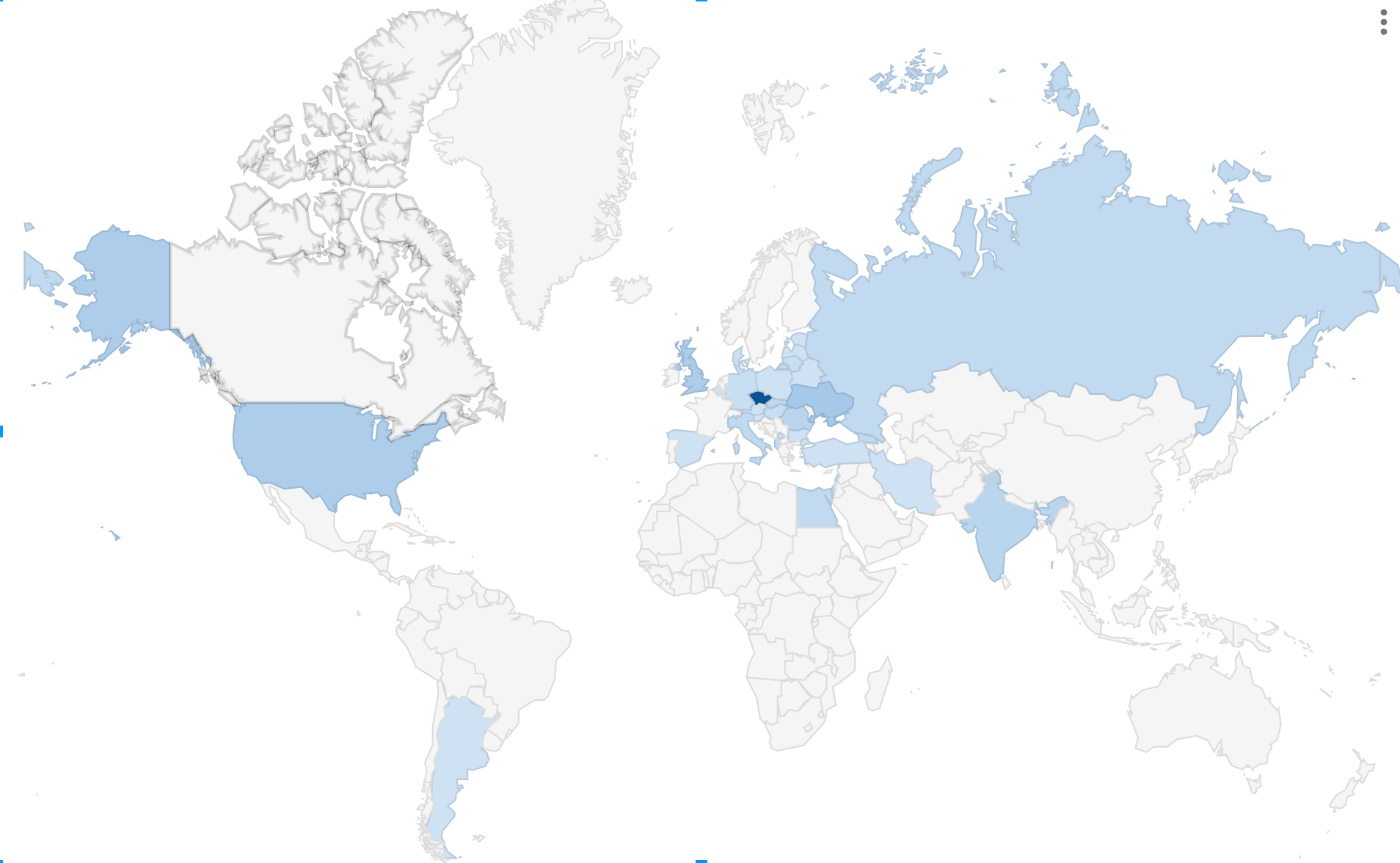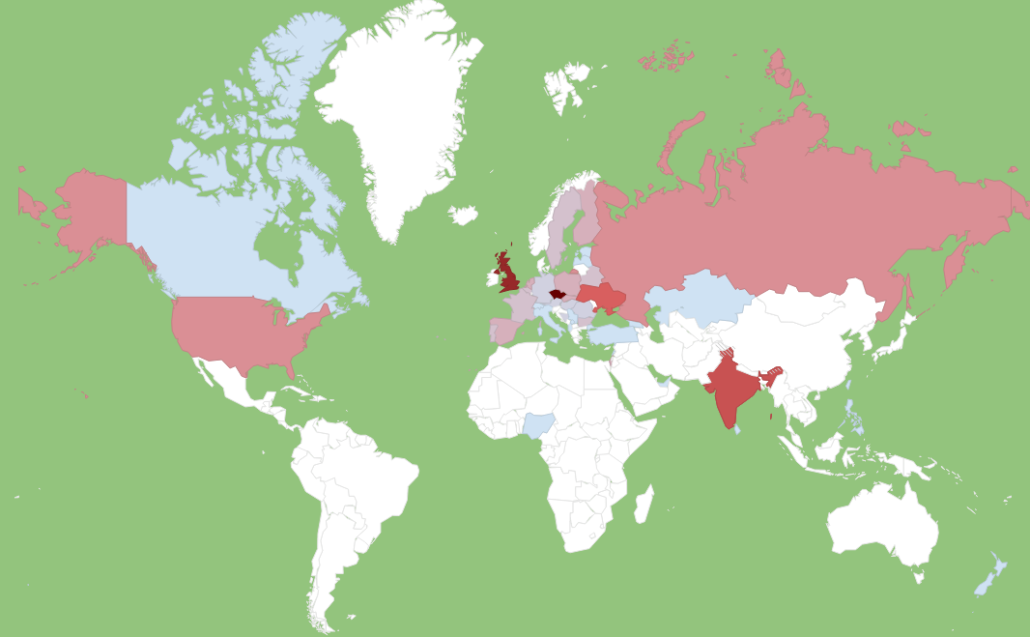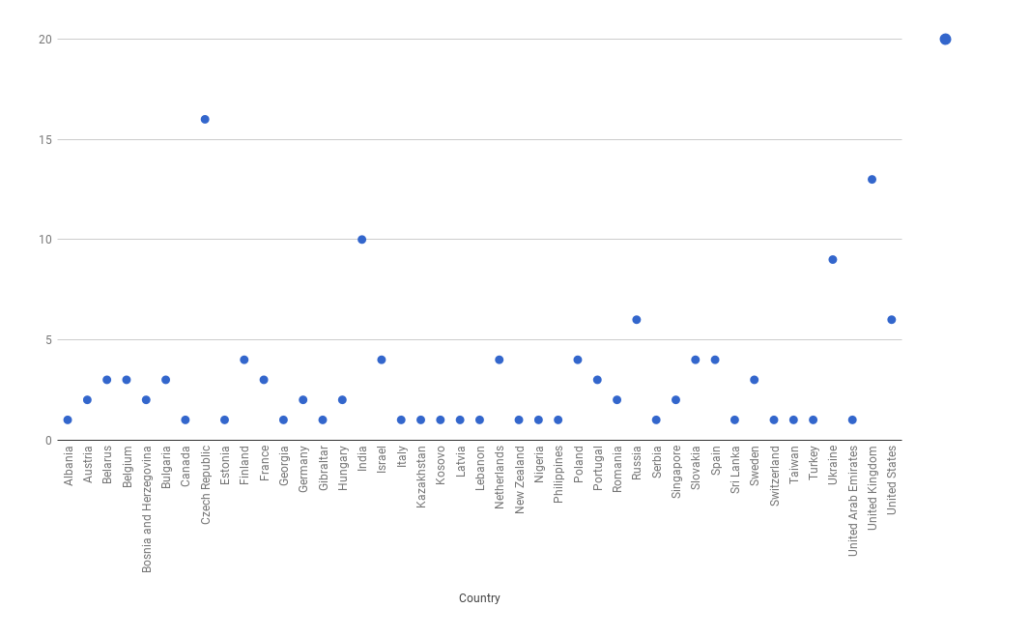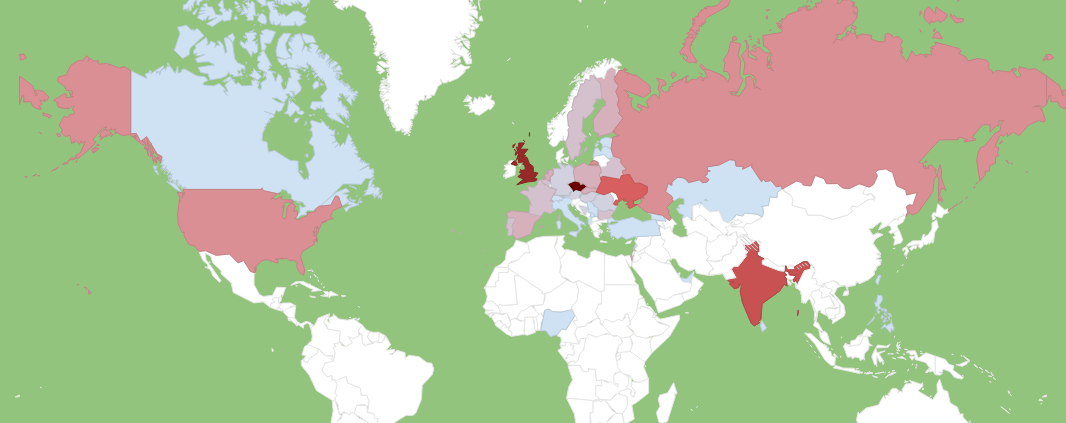StartupYard Batch 9: Visualized
StartupYard Batch 9 kicks off in a little over a month. Final selections are happening next week. Time flies! We can’t wait to see who will be joining us for Batch 9.
Every round, we like to share a visualization of the application process. While we haven’t made the final selection, we can share our initial data about the applicant pool. All data is anonymized, but you can get a nice sense of the trends we encounter with each round.
A full overview of the selected teams will be available at least a month after the start of the program (so no earlier than May).
As we did for Batch 6, and then again for Batch 7 and Batch 8 we find it very useful now to look back on the applications, and see what’s changed this time around. Where are people applying? What are startups working on? What are the hottest buzzwords? Previous experience has shown us that StartupYard applications can be revealing about the key trends to watch for in the next 6-18 months.
Here we’ll give you a visual trip through our applications for this round, with our analysis, and comparisons with previous years.
StartupYard Batch 9 : Who’s Applying?
StartupYard Batch 7 was the first time that StartupYard attempted two rounds of acceleration in one year. Batch 8 and 9 also come in close sequence, with applications closing on Batch 9 only 2 months after the end of Batch 8. The pattern in volume of applications has remained the same: we received almost exactly the same number as with Batch 8: 149 in total.
Below is a word cloud of the areas in which Startups identified their top skills and the markets they are working in. Note: we have eliminated the word “software,” due to its ubiquity in the application pool.

As we can see, Finance takes the top spot, along with Transportation, and Artificial Intelligence coming in second. We can hardly be surprised by this: between Bitcoin and Blockchain hype, Uber’s continued fascination for tech people, and the many emerging use cases for AI or IoT, these areas are naturally attracting fortune-seekers with new ideas.
In Batch 7 and 8, we noted that Marketing took the top spot in terms of which domains the startups were interested in. This was followed in the past by Data, and then Marketplace.
Going even further back, startups from Batches 5 and 6 were still focused on Platforms, Mobile, and Apps, with UX and UI being important skills to mention. Today, these terms barely appear. It seems platforms with good UX and UI are now seen as default requirements for new products.
Marketing is Dead: Long Live Marketing
Interesting to us is the fall from grace of Marketing, which led the board for years. It may well be a reaction to the broader cultural shift toward suspicion of Big Data and Advertising that have dominated the tech conversion in recent years. Facebook and Google have particularly been the subject of much concern over privacy, the spread of propaganda, and the wellbeing of users.
The rising focus on AI along with Blockchain seems likely to be part of a shift in general consumer sentiment against the mass collection of private data, with its inherent loss of privacy and control over our experience of online services. At the same time though, these terms are increasingly being used as instruments of marketing: companies now talk about using Blockchain and AI to do things for which these technologies may or may not be huge game changers.
While data is still the foundation of AI, it may be that startup founders see what they’re now doing as beyond the data mining business, which is already quite crowded. Big Data may have simply become a fact of life. On the other hand, new privacy regulations in Europe, and a cultural backlash against big data collection may be pushing entrepreneurs to avoid the need for massive data collection.
Finance and Distributed De-Uberization
Finally, Finance has made a big break from the crowd, likely because of rapid shifts in the way consumers are treating finance products. PSD2, European open banking regulations that force financial institutions to allow customers to share their financial data across multiple platforms, was meant to drive more innovation around consumer finance products.
We see increased interest not only in personal finance, but in insurance management (both B2B and B2C), payments, and consumer/corporate investing.
In addition, the sudden rise of the ICO, and thousands of emerging technologies based on the Blockchain, have inspired startups to become “finance” oriented companies. Tokenization of services and networks opens the opportunity for financial products to become involved in more areas of the economy than before.
Whereas in years past, we saw many applications interested in the “uberization” of many services, today startup founders are seeking to “blockchain” everything, from in-person payments to insurance contracts, to day-labor.
This cannot be too surprising, given that the sharing economy Uber has represented for many years has really failed to deliver the benefits it has long promised. Indeed, Uber itself has still failed to become a sustainable business, and has suffered a severe backlash from consumers – once the name on the lips of every founder, Uber is no longer in the conversation.
Whereas “uberization” leverages a common platform like a mobile app to create a marketplace, and extracts rent from the different participants, blockchain startups forgo the platform in favor of a protocol that can be remixed with other services, and which is not centrally controlled.
This is doubtless appealing to startup founders, because it distances them from the deeply unpopular practices and cultures of companies like Uber. Uber still takes a large share of every transaction on their platform, but it is increasingly clear that their centralized model does not deliver significant benefits to the market (which has been largely covered up by Uber’s massive subsidies for drivers and riders).
This is not even to mention that Uber itself is not a sustainable business after nearly a decade in operation. It lost nearly $4 billion in 2017, leading Forbes to label its business model “fundamentally broken,” something many critics had been pointing out for years already.
Startup founders are realizing that services like Uber are certainly attractive to consumers, but they are also asking: “why do you need Uber the company to have Uber the marketplace?” Most of what Uber can deliver to customers and drivers can be done more fairly, more reliably, and more cheaply using a distributed service model.
Where are Startups Applying From?
Let’s start with a view on where applications came from for Batch 8, and compare that with Batch 9. Here they are in sequence:

Startup Applicants to Batch 8 – the Previous Batch

Applications to Batch 9 – Current Batch : Blue = low volume, Red = High Volume
I’ve changed the color scheme here slightly to emphasize the volume of applications from 2nd tier countries. As you can see, Czechia is still the leader, but it leads with only a third the number of applications as even last year. Batch 8 had about 45 applications from Czech companies, Batch 7 had even more. This year, there were only 16 Czech companies in the pool.
At the same time, 0ur geographic footprint widened considerably. This year, we attracted applicants from 44 countries: more than ever before. Batch 8 saw only around 32 countries. New countries included Sri Lanka, Gibraltar, Taiwan, and Lebanon- with one application each.
Which countries saw an uptick in applications? Surprisingly the biggest jump was from the UK, where 13 companies applied. That’s more than any previous year. Perhaps Brexit nerves or political tensions are pushing UK entrepreneurs to seek growth in Europe before it’s too late.

Detailed breakdown of application numbers for Batch 9
Anecdotally, we noticed that a significant portion of co-founders in UK based teams were in fact southern Europeans or other ethnicities. Are startup founders looking to abandon the UK and return to mainland Europe before the Brexit hammer drops?
Applications from Ukraine and India also rose this year. Ukraine’s jump was expected because Ukrainians have recently been granted the ability to visit Europe without need of a visa in advance of travel. This is good news for startups, as it decreases a huge barrier to Ukrainian companies seeking to do ongoing business in the EU. It may also be a matter of concern for Ukrainian startups, many of whom have personally confirmed to me during visits that more young people are leaving for the west than in the past.
Full Employment Has Huge Impact
We had believed in the past that the number of applications from Vysegrad countries would continue to increase at a faster pace. This has not happened over the past two cycles. Instead Slovakia, Hungary and Poland contributed fewer applications in total than came from Ukraine alone.
There may be a key to explaining this in the employment statistics across the region. Slovakia’s rate of unemployment dropped like a rock in 2017, from almost 9% to less than 6% today. Anything under 5 is considered “full employment,” meaning that jobs are available and workers in demand across the income spectrum.
In fact, most of the Vysegrad group are suffering from a lack of workers for the first time since the fall of communism. Poland, Hungary, and Czechia are all below 5%, whereas the European average is about 8%. Wage inflation has increased accordingly, rising in Czechia to nearly the 2007 pre-crisis level of 6% per year.
Meanwhile, unemployment remains higher in Eastern Europe, with Ukraine close to 10%.
For the first time in many people’s lives in Vysegrad countries, governments are taking measures to improve workplace participation among young people, encouraging them to join the workforce earlier.
Because unemployment is very low, wage inflation and working conditions are improving quickly, possibly encouraging more young people to seek jobs in existing companies, rather than starting their own businesses. Increased career security may also give employed people less motivation to leave a comfortable salaried lifestyle and found a startup.
As living standards rise, the risks of starting a business are more obvious: loss of opportunity and income can be more acute when incomes are rising, as people tend to fear losing what they already have. In times of high unemployment, some will take more risks, having less to lose.
In Which Domains are Startups Working?
One of the key items every year is the breakdown of “domains,” or areas of tech innovation where the startups are working. This is often somewhat different from the market focus, as startups seek to apply new technologies to old problems, or bring existing technologies into new markets for the first time.

Batch 9 Domains excluding “other.”
The core domains we focus on represent more than half of all applications. Of these domains, Machine Learning remains the strong leader it was last year.
However, IoT and Blockchain have strongly edge out Analytics and Security, which have been dominant in previous rounds.
It’s important to note that the domains startups identify themselves as belonging to may be a function of fashion as much as the reality behind the words. Whereas in previous years, we would get many applicants who called themselves “security companies,” today those same companies might emphasize AI, or IoT as their domains, with security being downplayed.
In the previous round for example, Steel Mountain, which makes a security device that employs machine learning to hacker-proof connected homes and devices on Wifi, called itself a Security Company. Today, it might rather call itself a Machine Learning company, which does security, or an IoT device company that uses Machine Learning.
Often the product can be the same, but the emphasis in the application may change to fit the new trends. The security topic has somewhat cooled for startups, as blockchain has taken over many of the same applications, and as security companies become more common.

Batch 9 Domains Including “other”
As always, the largest single group of applicants represents none of our areas of focus. Some of these companies do in fact work in IoT, Blockchain, or AI, but they choose for whatever reason to emphasize their domains differently.
This has a lot to do again with how founders see themselves and their future in the industry they’ve targeted.
We sometimes ask applicants: “Do you want to be a technology company or an ‘X’ company?” X being insurance, music, entertainment, finance, or 101 other possible domains. The distinction at an early stage is not always completely clear, especially because founders are not always from technical backgrounds, and don’t always see themselves as primarily tech companies.
One conversation we had with an applicant working on Machine Learning revealed that he was focused on one particular industry, and would not be interested in shifting focus. Of course that’s a valid choice, but it’s also something you can’t always tell from the way an application is written. Sometimes applicants begin with one idea, and end up working on something entirely different, aside from the core technology involved.
What It All Means
This data set is too small to draw a definitive picture of the startup landscape in 2018. However, as we have been consistently monitoring trends in our application pool for the past 3 years, we can outline some clear trends.
The state of employment has had a clear impact on the volume and sources of applications. We also believe that the state of the economy has affected the types of companies applying to StartupYard. The ubiquitous “me-too” startups and the local clones of American products and services of 5 years ago are all but gone today. Perhaps many of these ideas have already been successfully executed in Europe, but the state of the economy has also changed the landscape considerably.
In 5 years, networks around high-tech startups have matured, and the communities around Central Europe have gained new heroes in the process (including many of our alumni). The first generation of online entrepreneurs, and successful online businesses, are now engaging very actively with the younger generation of startups, as we have observed within our own mentor community. Banks, Telcos, Insurance companies, Manufacturers, and Tech giants feel the increasing need to engage with early stage companies, and younger tech entrepreneurs now have a menu of options for growing a business with corporate partners, early stage investors, and active Business Angels.
It is a good time for startups.




